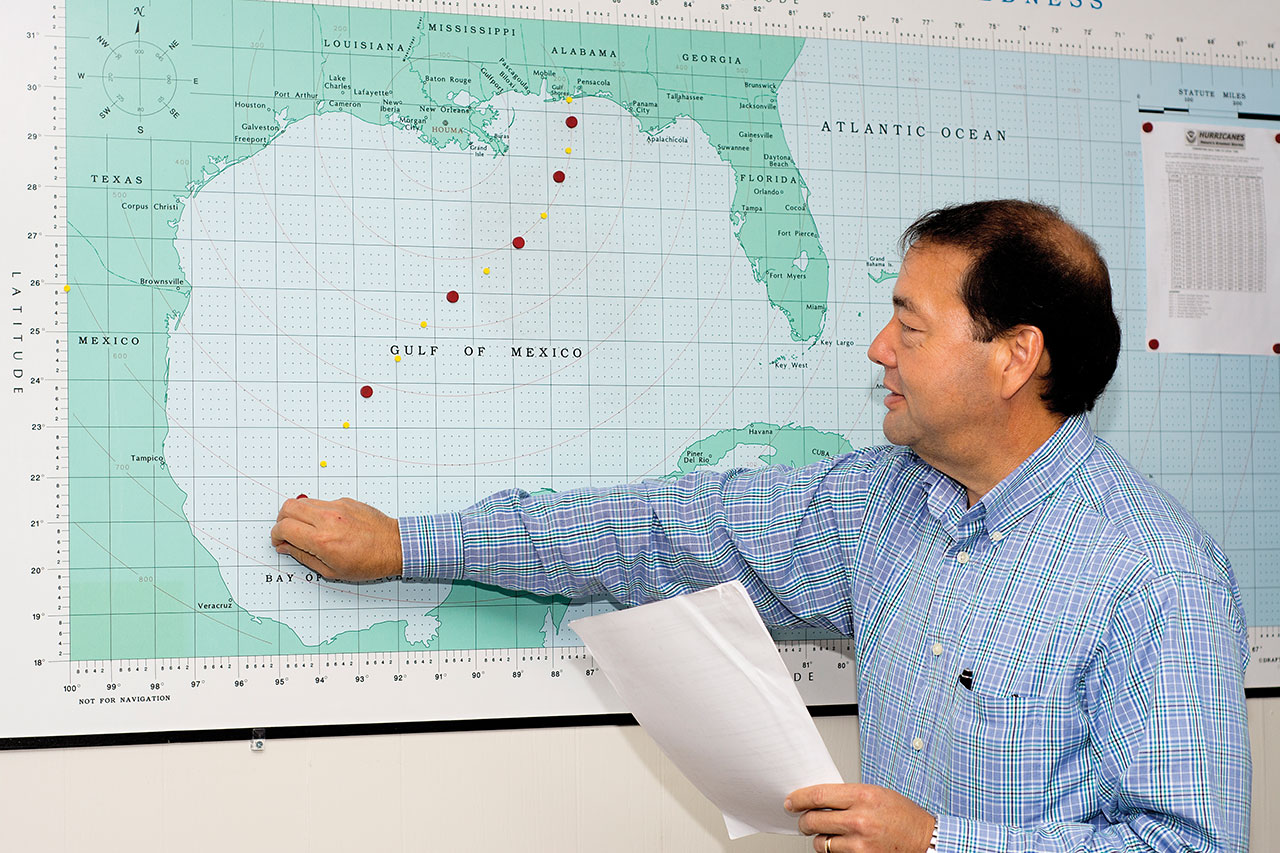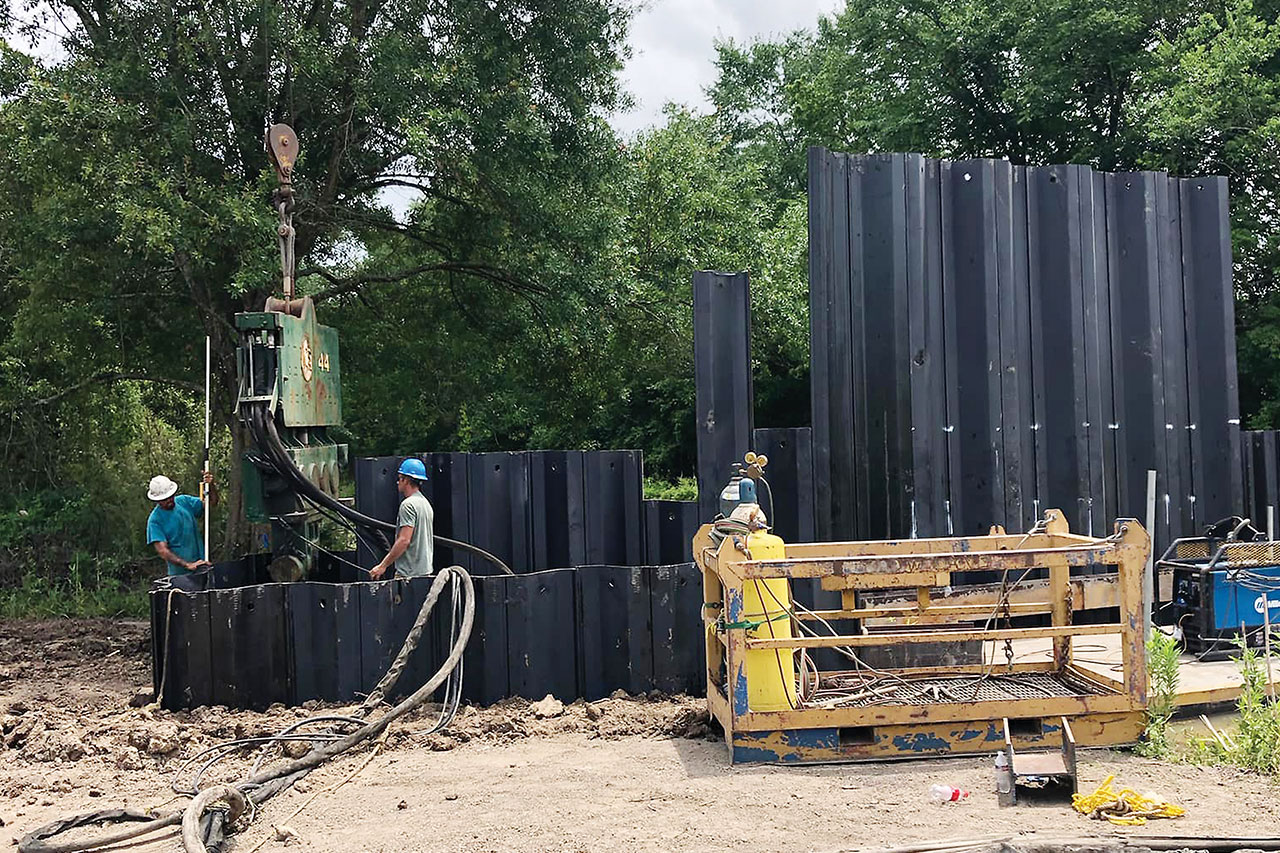
Earl Eues | Director, Terrebonne Parish Office of Homeland Security and Emergency Preparedness
June 12, 2019
Seafood Labeling Bill Gets Government Approval
June 12, 2019RESIDENTS, BUSINESS OWNERS SAY IT MAY BE A LONG SUMMER IN TERREBONE
The water levels of the Mississippi River, swollen since last fall, are mirroring that of the 1927 “Great Flood.”
The levels are expected to peak the Morganza Spillway sometime in the coming weeks, causing the spillway to open, thus removing a crucial tool for protecting bayou communities from flood waters that are now soon to come our way.
Eight states in the heart of America have received record rainfall the past year. That run-off flows into rivers and tributaries. Those bodies of water flow downhill.
Now, they’re on our doorstep with nowhere to put them.
The Army Corps of Engineers planned to open 25 percent of the spillway over a 4 day period beginning in early June. There have been several delays since that initial decision. At press-time on June 7, there is no known opening date for the spillway, but the Corps is closely monitoring Mississippi River levels and will move fast to open the spillway if certain flood stage levels are reached. In the likelihood that the spillway is opened this summer, water will be diverted from the river into the Atchafalaya Basin, which is already swollen. The overflow could threaten neighborhoods in western Terrebonne Parish throughout the summer.
“The big difference between 1927 and today is that we didn’t have a system of control,” said Ricky Boyett, Chief of Public Affairs for The Army Corps of Engineers. “We can put the water where it’s designed to go.”
If the spillway opens, in an effort to maintain control of America’s main artery, the Corps would conduct a “slow opening”: one foot of water the first day, two feet the second day, three feet the third day, and finally on the fourth day, the pressure is unloaded at about 1.1 million gallons per second (15,000 cubic feet per second). If this process is not conducted, the spillway will become too dangerous for the Corp to operate and its ability to influence the flow of water in any way will be lost.
Aware of this potential threat, for some bayou residents, this is life as usual — an occurrence that’s seemingly happening too often lately.
Seated on a small pier, under the shade of a tree, and jutting out onto Tiger Bayou, a tributary of Bayou Black, Jane Leger of Gibson, and her mother Ameile Guilbeau of Grand Isle, were repainting the structure on June 1.
Approached by a reporter, the two pulled up chairs to take a break.
With her house across the street from the bayou, Leger said she was more concerned for her children, all of whom already had water in their yards from recent flooding. As she spoke, her husband Rodney Leger, who was mowing the lawn, pulled up and joined the conversation.
The two recalled the flooding caused in 1973, when the floodgates were first opened, and how the local grocery store was flooded out. They acknowledged that both the floodgate and the sinking of barges to restrict water flow has helped, and like many living so intimately with the waterways, the two knew elevations of nearby areas.
“4-feet, 3-inches here, over there is about a plus 1-foot,” said Rodney pointing across the bayou from their house. “In 2011, we sandbagged and everything but the water didn’t get too bad.”
2011 was an example Boyett raised to illustrate how much control could be exerted over the dangers of flooding since 1923. According to Boyett, in Louisiana the spillway averted about $170 billion in damages.
Boyett said that the current situation was being continuously monitored, “we will not operate the systems if we are not required to,” he stressed.
Terrebonne Parish is also monitoring the issue. According to Parish President Gordon Dove, the parish has proactively begun installing make-shift levees, known as “tiger levees,” and constructed of sheet pilings, around Valhi Boulevard, Sugarwood, and Lake Manchester.
Dove told The Times in early June that Terrebonne is “as prepared as it can be” for the flooding event, adding that the parish has plans and contingency plans for every possible outcome and direction of water flow.
Over in Gibson, those plans mean everything to the people who need them most.
When asked about her house, Guilbeau said she only feared hurricanes, adding that they are praying for the best in the current flooding situation.
“Look, we got the bay on one side and the Gulf on the other,” she said. “Only time we got to worry is when we get hurricanes. Then we have to evacuate.”
BUSINESS OWNERS ALSO ON ALERT
Local business owners are not resting on their hands while waiting.
They’re making plans to protect their livelihoods while waiting on the water.
One business owner in Gibson said he is moving some of his heavier, more expensive equipment out of town to high ground — just in case things get bad.
The business owner asked not to be named because he didn’t want to associate his store with the flooding, saying that it “might scare customers away from coming out here to do business.”
“It’s scary,” he said on June 1. “It hasn’t rained here in what? Two weeks? Three weeks? And they’re saying we’re about to flood. Isn’t there some irony in that? It just goes to show how we’re all connected. What happens somewhere else is now our problem.”
The business owner shuffled inventory inside his place of business during the interview, saying that if forced to closed, he would lose direct sales, but would be recouped in relief funds, adding that he “has faith” that local, state and national government would help out.
President Donald Trump has approved an emergency declaration for Louisiana, which means that the government will assist with damages that come our way as a result of the flooding.
“It will take time, but we will get through this,” he said. “We always do.”
Gibson native Pete Guillot agreed, but said there is never a perfect solution.
He said the timing of it all couldn’t be worse with hurricane season, warm temperatures and the downturn in the local economy.
Guillot said he has friends who have cattle in the affected areas and the process of relocation will be difficult.
“It’s going to be a long summer,” Guillot said, rubbing his arm across his face to wipe sweat off his brow in the mid-day heat. “This is the last thing we needed here, but it’s coming. It’s on the way.” •










